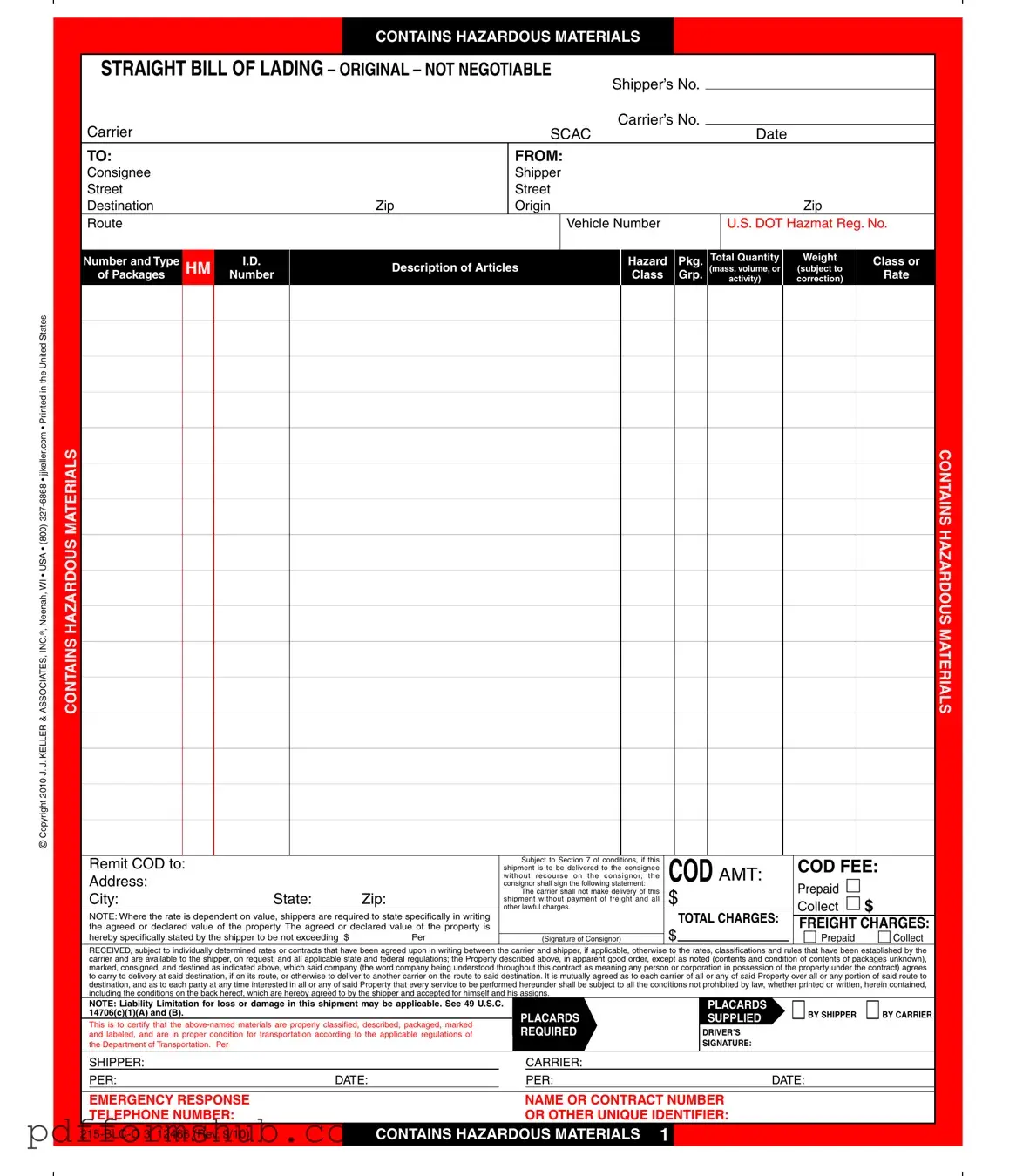Fill in Your Hazard Bill Of Ladden Form
The Hazard Bill of Lading is a crucial document used in the transportation of hazardous materials. It serves as a receipt for the goods being shipped and outlines the responsibilities of both the shipper and the carrier. Properly completing this form is essential to ensure compliance with safety regulations and to facilitate smooth transportation.
Ready to fill out the Hazard Bill of Lading form? Click the button below to get started!
Customize Form
